A relic of Cold War history right here in the Everglades.
In the 1950’s as the Cold War was beginning, the primary threat to the US was Soviet bombers delivering nuclear weapons by flying over the North Pole to America. To protect themselves, the Americans deployed several hundred Nike-Hercules anti-aircraft missiles at bases across the northern US–virtually every sizable city had a couple batteries of Nike-Hercules missiles nearby. Most of these missiles carried conventional high-explosive warheads, but a few were fitted with the W-31 nuclear warhead, which had an adjustable yield of 10-40 kilotons. The nukes were intended to be detonated at high altitude to take out entire formations of Russian bombers as they approached.
Then in October 1962, American spy planes found a number of Soviet missile bases on Cuba. In the ensuing crisis, the world went to the brink of nuclear warfare before both sides blinked.
Less well-known to the public, however, was the presence of Soviet bombers at airbases in Cuba. These were not covered in the agreements that ended the Missile Crisis, and remained in Cuba right till the end of the Cold War. Since none of the existing Nike bases in the north were of any use against Russian bombers approaching from Cuba, a new Nike site was needed. By the end of October 1962, the 2nd Missile Battallion had been deployed to southern Florida. Just outside the Homestead entrance to Everglades National Park, they quickly put up a temporary Nike-Hercules battery, then began work on Site HM-69, a permanent missile site located inside the park.
The permanent base was completed in 1965. It consisted of a barracks building and radar dishes located 1.5 miles away from the actual missiles. The missiles were deployed in three “barns”. A proportion of the Nikes were nuclear-armed, and because the flight time for a fleet of bombers from Cuba to Miami was so short, there was not enough time for officers at HM-69 to contact the Pentagon for orders. So the battalion officers in Florida were given authority to, if necessary, launch nuclear-armed missiles at their own discretion.
The Nike site remained active until 1979, when it was decommissioned. In 2004, the abandoned site was given to the Everglades national park, and the national park Service now runs guided ranger tours of the facility. It is the best-preserved of all the Cold War Nike sites that once ringed much of the US.
Some photos from a tour:
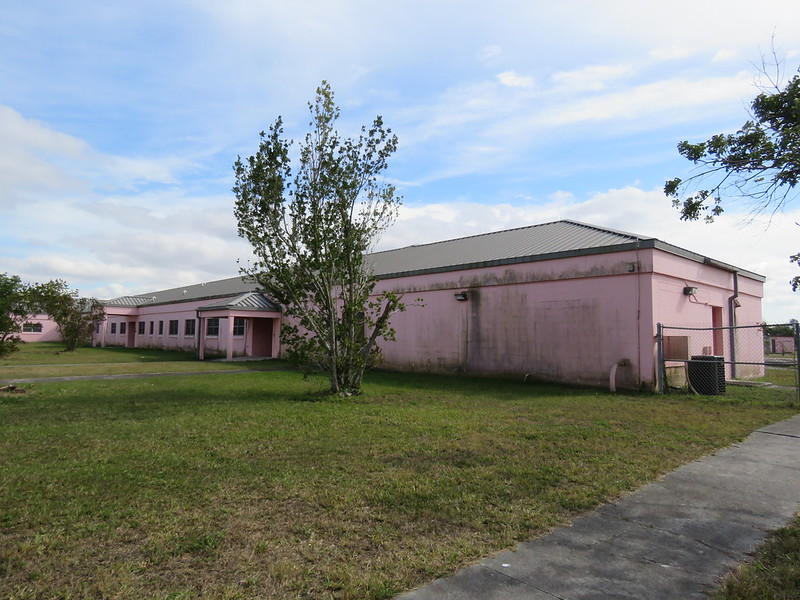
The tours begin at the Barracks Building. This is where the battery personnel were housed: the targeting and tracking radars were located behind this building. The Barracks were painted pink because it was presumed this would have a calming effect on the crews.
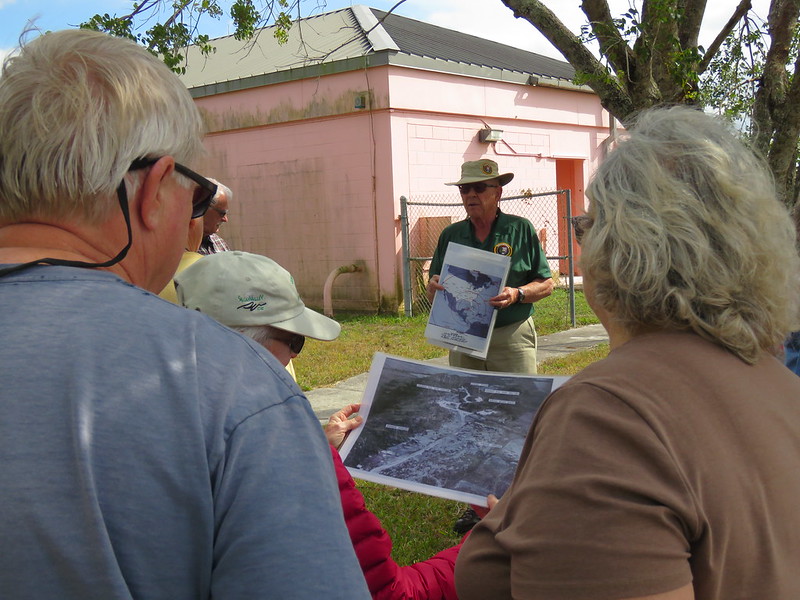
Our tour guide explains the history of the Cuban Missile Crisis. In 1962, he was a US Marine who had been deployed to Miami in preparation for the invasion of Cuba.
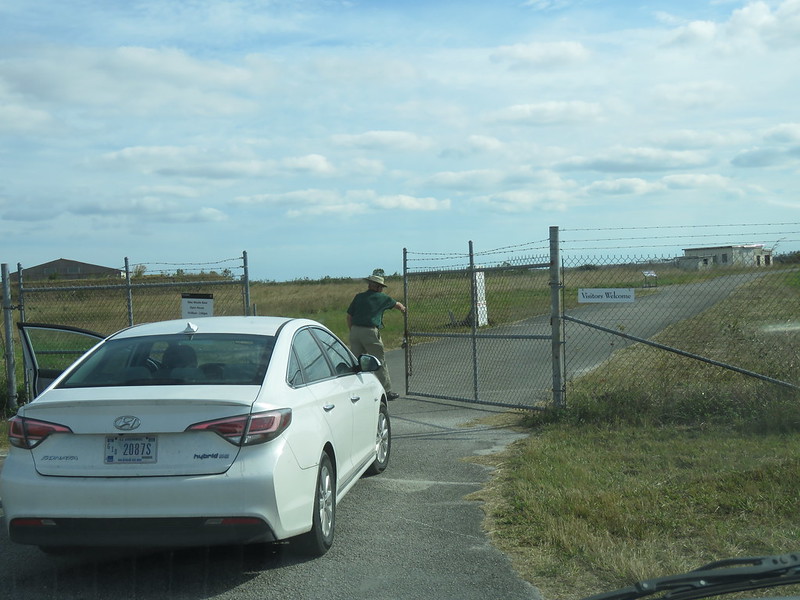
From the Barracks, the tour group drives about a mile and a half to the missile battery, which had been guarded by this gate.
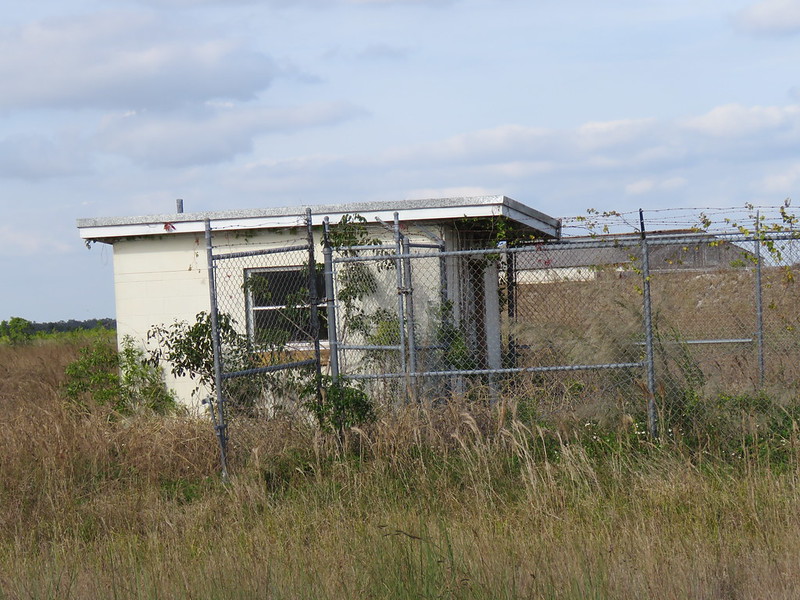
A dog kennel. The missile site was protected by a double fence with guard dogs between them.
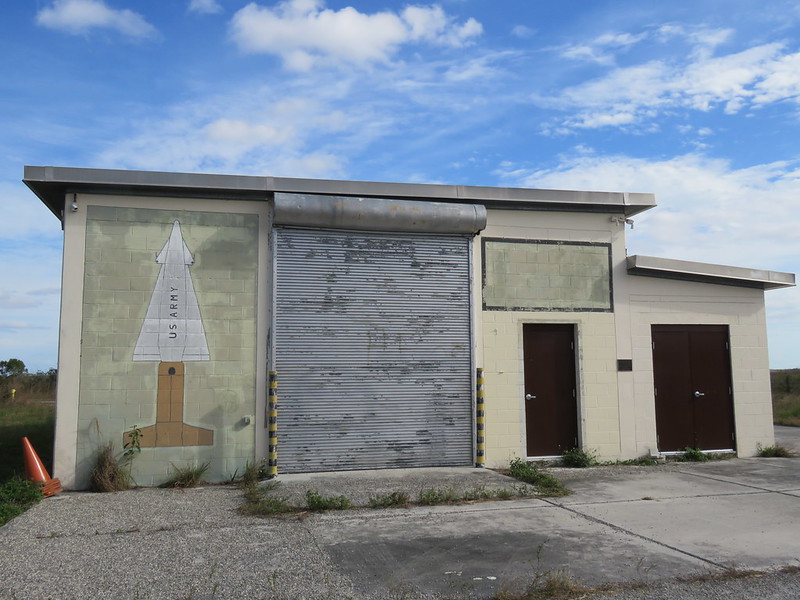
The Assembly Building. Crated Nike missiles would arrive and be assembled here.
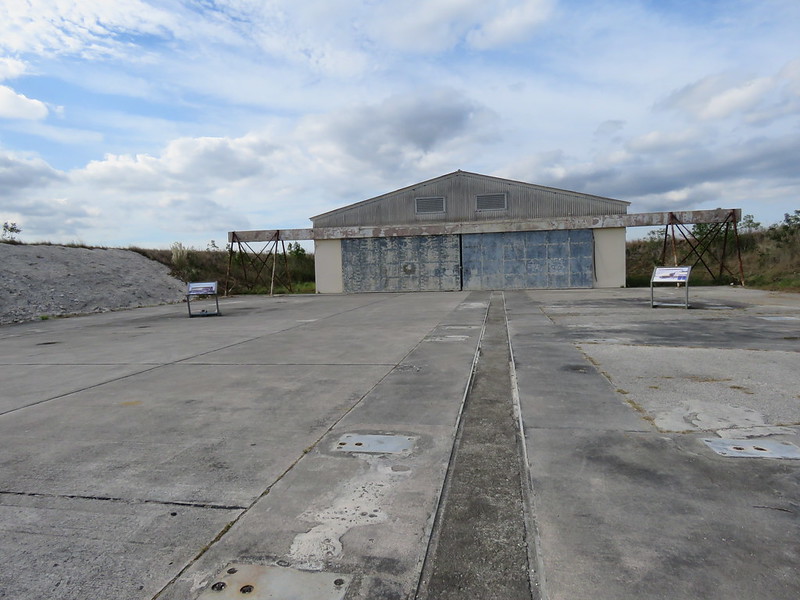
One of the three Barns. At most Nike sites, the missiles were stored on their launches in underground pits covered by doors, and would be raised into firing position when needed. In the Everglades swamplands, this could not be done, so the missile launchers were stored aboveground in these buildings.
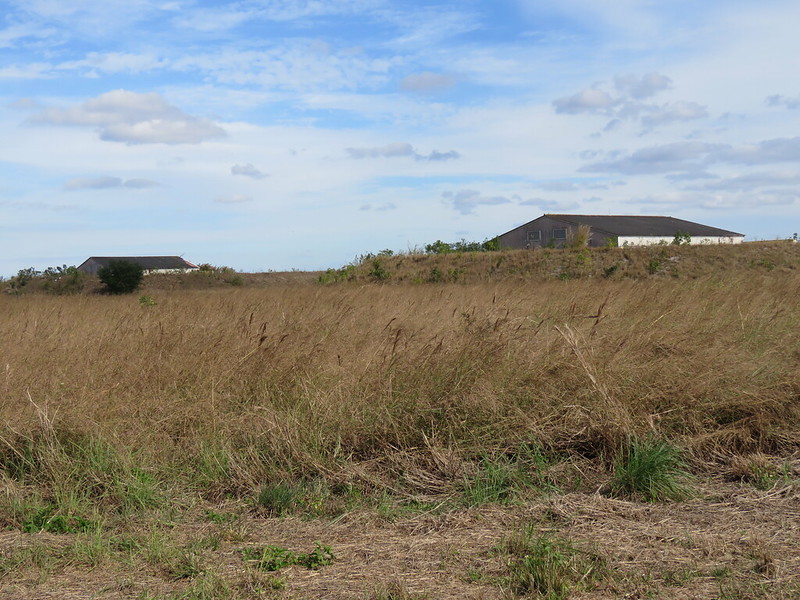
Each of the Barns was surrounded by an earthen berm to protect the rest of the base in case of an accidental rocket explosion.
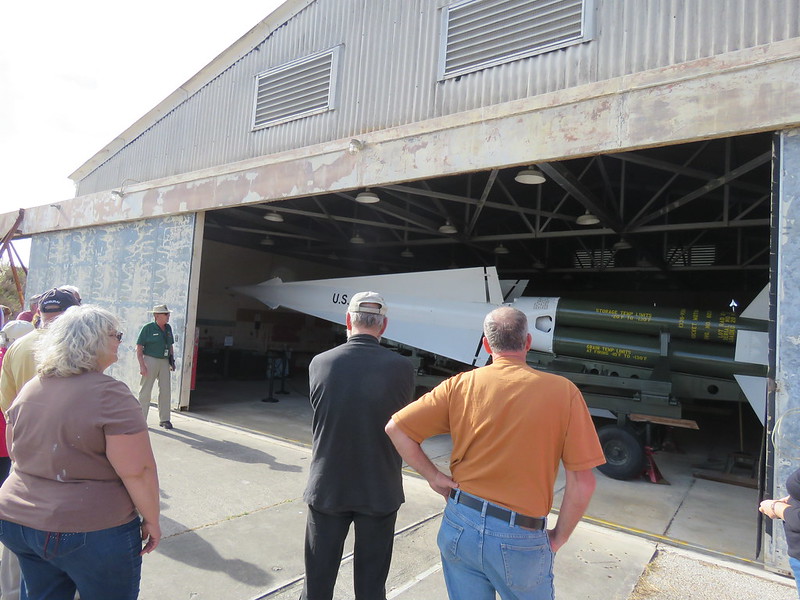
Inside the Barn, the Nike was stored on its launcher. If an alert was sounded, the launcher would be rolled outside on a set of steel rails and erected for launching. From initial radar contact to launch took about 8 minutes.
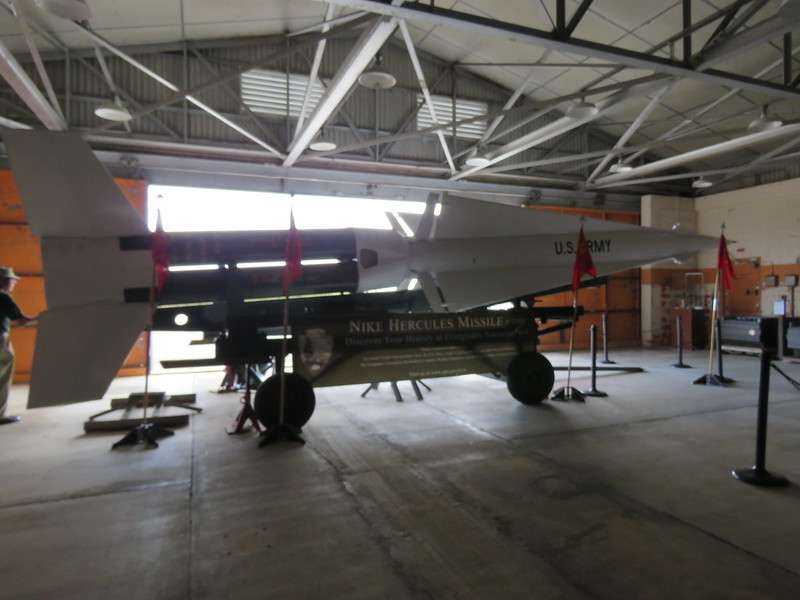
The Nike-Hercules first stage consisted of four solid-fuel rocket boosters. These dropped off after firing, and the upper stage engine would drive the missile to its target.
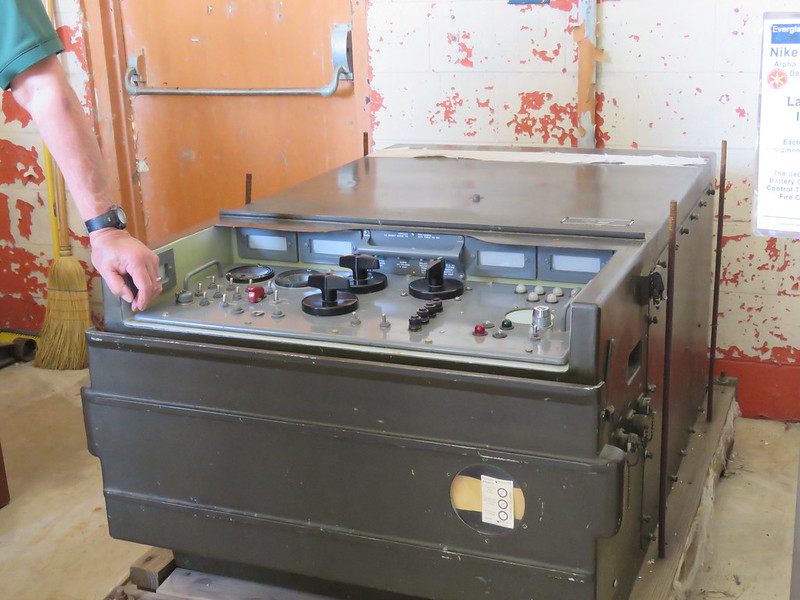
Nike launch-control console

The Nike guidance module. The missiles were guided by a microwave radar beam to their target.

This certainly fills in another of the many gaps in my knowledge of Cold War history; very informative. Trying to remember now: did you visit any Nike sites when you were in L.A.? I used to bicycle up to the old radar site at the top of Mulholland Drive often.
Were any nuke Nike live-fire tests conducted?
David: No, this is the first Nike site I’ve been to. As I understand, nearly all the others are either gone completely or are just remnants,.
The Nike-Hercules used the W31 warhead, which was the same one as the Davey Crockett. I know that warhead was tested at Nevada. I also know that the Nike crews were sent once a year to White Sands to do livefire practice at drones–but that was with conventional warheads. I don’t know if they ever did a practice run with a live nuke. (I do know they live-tested a Genie air-to-air missile–but I don’t recall offhand if that also used the W31 warhead.)
I should also note that the Nike was an anti-aircraft system, not an anti-missile. There was talk that it maybe sorta kinda might be able to hit an incoming missile, but I don’t think it was ever actually tested.
I do remember seeing news footage of the Nike Sprint during ABM Treaty negotiations in my teens. Sucker was fast.
Here’s some info about the radar site on Mulholland, and the launch site in Van Nuys.
btw, why do you suppose we’re so fascinated with all this? Are we just relieved to have survived it all — so far?
http://www.themilitarystandard.com/missile/nike/sites/la-96l.php
David: Young people today who were not around back then can have no idea what a time it was. I always just assumed that old fool Reagan would push the button and kill us all.
One of the things I find most fascinating about sites like this, though, is that back in the day these were some of the most secret places in the entire world, and now today there are tourists walking around in them snapping photos with their cellphones. It’s kinda surreal. Especially because back then we assumed the Cold War would continue forever–until we finally blew ourselves up.
This was all news to me having a Nike base right there in the Everglades. The scariest thing of all to me was the fact that the battalion officers could launch a missile at their own discretion.
Bev: Yep, the decision to fire off the nukes would have been made by some 25-year old battery commander, all on his own.
Here’s hoping he hadn’t drunk too much coffee that morning…..
Very interesting,I was stationed at Delta battery from 1973 to 1975.
Robert: D Battery is now a detention facility for the Dept of Homeland Security.